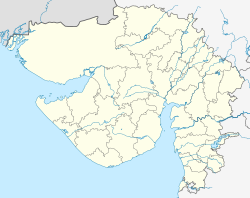티오프로닌
Tiopronin | |
| 이름 | |
|---|---|
| 선호 IUPAC 이름 (2-술파닐프로파나미도)아세트산 | |
| 기타 이름 2-Mercaptopropionylglycine 아카디온 | |
| 식별자 | |
3D 모델(JSmol) | |
| 1859822 | |
| 켐벨 | |
| 켐스파이더 | |
| ECHA InfoCard | 100.016.163 |
| EC 번호 |
|
| 케그 | |
| 메슈 | 티오프로닌 |
펍켐 CID | |
| RTECS 번호 |
|
| 유니 | |
CompTox 대시보드 (EPA) | |
| |
| |
| 특성. | |
| C5H9NO3S | |
| 어금질량 | 163.19 g·163−1 |
| 외관 | 흰색 불투명 결정체 |
| 녹는점 | 93~98°C(199~208°F, 366~371K) |
| 로그 P | −0.674 |
| 산도(pKa) | 3.356 |
| 기본성(pKb) | 10.641 |
| 약리학 | |
| G04BX16(WHO) QG04BX16(WHO) | |
| 입으로 | |
| 법적현황 | |
| 위험 | |
| GHS 라벨 표시: | |
 | |
| 경고 | |
| H302 | |
| 치사량 또는 농도(LD, LC): | |
LD50(중간 선량) | 1,300 mg kg−1(도덕, 랫드) |
| 관련 화합물 | |
관련 알카노산 | |
관련 화합물 | |
달리 명시된 경우를 제외하고, 표준 상태(25°C [77°F], 100 kPa)의 재료에 대한 데이터가 제공된다. | |
| Infobox 참조 자료 | |
| 임상자료 | |
|---|---|
| 상명 | 티올라 |
| 라이센스 데이터 | |
| 식별자 | |
| 드러그뱅크 | |
| 체비 | |
| CompTox 대시보드 (EPA) | |
| ECHA InfoCard | 100.016.163 |
티올라라는 상표명으로 판매되는 티오프로닌(Tiopronin)은 낭포성 질환에서 낭포성 강수와 배설 비율을 조절하기 위해 사용되는 약이다.[2][3] 이 질환의 희귀성 때문에 티오프로닌은 고아 약물의 분류에 속한다. 화학이나 약리학 모두에서 페니실라민과 다소 비슷하다.[citation needed]
티오프로닌의 일반 버전은 2021년 4월 현재 미국에서 구입할 수 있다.[4]
사용하다
티오프로닌은 주로 낭포증에 사용되며 낭포성 공동체에서 잘 알려져 있다. 사람의 낭포증의 심각성에 따라 티오프로닌은 평생 복용될 수 있으며, 아마도 어린 시절부터 시작될 수 있다. 이 약은 비뇨기 시스테인과 반응하여 보다 용해성 이황화합물인 티오프로닌-시스테인 복합체를 형성함으로써 작용한다.[5]
부작용
티오프로닌은 다양한 부작용을 나타낼 수 있으며, 이는 활성 황하이드릴 그룹을 포함하는 D-페니실라민 및 기타 화합물의 부작용과 대체로 유사하다.[6] 그것의 약동학은 연구되어 왔다.[5]
사회와 문화
미국에서는 미션 파르마탈이 알약 1알당 1.50달러에 시판했지만 2014년에는 마틴 슈크럴리 소유의 레트로핀이 판권을 사들였고, 가격은 100mg 캡슐 1알당 30달러까지 올랐다.[7][8]
임프리미스제약은 2016년 복합약으로 시판된 저가 버전을 선보였다.[9]
리서치
윌슨병에도 쓰일 수 있으며(몸 속의 구리의 과부하) 티오프로닌은 항염증은 아니지만 [10][11]관절염 치료에도 연구되어 왔다.[citation needed]
티오프로닌은 금속 나노입자의 안정제로도 쓰이기도 한다. 티올 그룹은 나노입자에 결합하여 응고를 방지한다.[12]
참조
- ^ "Thiola- tiopronin tablet, sugar coated". DailyMed. Retrieved 18 June 2021.
- ^ Lindell A, Denneberg T, Hellgren E, Jeppsson JO, Tiselius HG (1995). "Clinical course and cystine stone formation during tiopronin treatment". Urological Research. 23 (2): 111–7. doi:10.1007/BF00307941. PMID 7676533. S2CID 34308815.
- ^ Coe FL, Parks JH, Asplin JR (October 1992). "The pathogenesis and treatment of kidney stones". The New England Journal of Medicine. 327 (16): 1141–52. doi:10.1056/NEJM199210153271607. PMID 1528210.
- ^ "Tiopronin: FDA-Approved Drugs". U.S. Food and Drug Administration (FDA). Retrieved 18 June 2021.
- ^ a b Carlsson MS, Denneberg T, Emanuelsson BM, Kågedal B, Lindgren S (August 1993). "Pharmacokinetics of oral tiopronin". European Journal of Clinical Pharmacology. 45 (1): 79–84. doi:10.1007/BF00315354. PMID 8405034. S2CID 8879752.
- ^ Jaffe IA (March 1986). "Adverse effects profile of sulfhydryl compounds in man". The American Journal of Medicine. 80 (3): 471–6. doi:10.1016/0002-9343(86)90722-9. PMID 2937293.
- ^ Lowe D (11 September 2014). "The Most Unconscionable Drug Price Hike I Have Yet Seen". In the Pipeline.
- ^ Carroll J (September 20, 2015). "Why would Martin Shkreli hike an old drug price by 5000%? Only a 'moron' would ask". FierceBiotech.
- ^ Elvidge S (September 29, 2016). "Imprimis shuts down Texas plant, axes 8% of jobs". BioPharma Dive.
- ^ Delecoeuillerie G (April 1989). "[Tolerability and therapeutic maintenance of tiopronin, new basic treatment of rheumatoid arthritis. Apropos of long-term follow-up of 268 cases]". Revue du Rhumatisme et des Maladies Osteo-Articulaires. 56 (5 Pt 2): 38–42. PMID 2740804.
- ^ Pasero G, Pellegrini P, Ambanelli U, Ciompi ML, Colamussi V, Ferraccioli G, et al. (August 1982). "Controlled multicenter trial of tiopronin and d-penicillamine for rheumatoid arthritis". Arthritis and Rheumatism. 25 (8): 923–9. doi:10.1002/art.1780250803. PMID 7115451.
- ^ Dahl JA, Maddux BL, Hutchison JE (June 2007). "Toward greener nanosynthesis". Chemical Reviews. 107 (6): 2228–69. CiteSeerX 10.1.1.454.2724. doi:10.1021/cr050943k. PMID 17564480.
외부 링크
- "Tiopronin". Drug Information Portal. U.S. National Library of Medicine.


